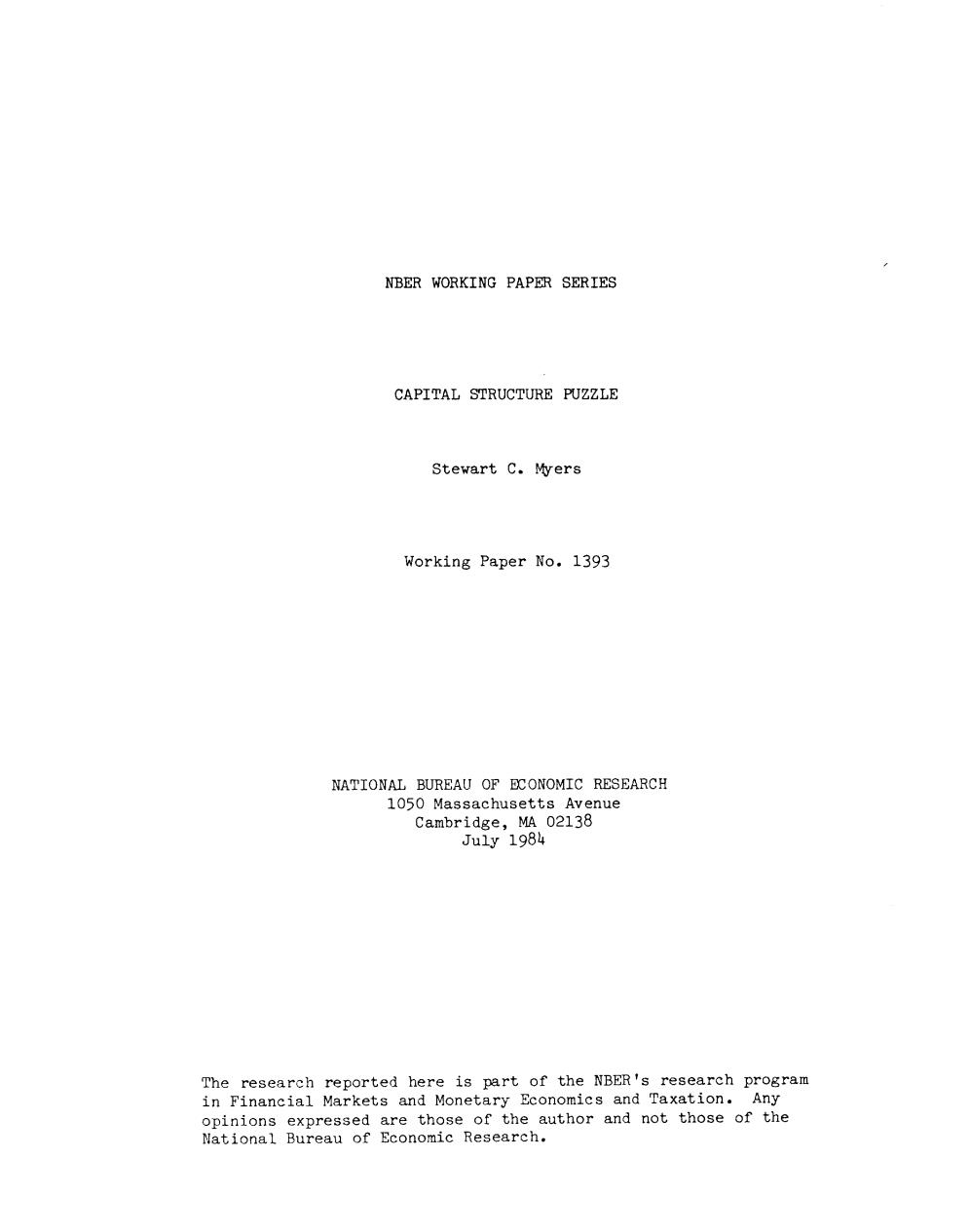
NBER WORKING PAPER SERIES CAPITAL STRUCTURE PUZZLE Stewart C.Myers Working Paper No.1393 NATIONAL BUREAU OF ECONOMIC RESEARCH 1050 Massachusetts Avenue Cambridge,MA 02138 Ju1y1984 The research reported here is part of the NBER's research program in Financial Markets and Monetary Economics and Taxation.Any opinions expressed are those of the author and not those of the National Bureau of Economic Research
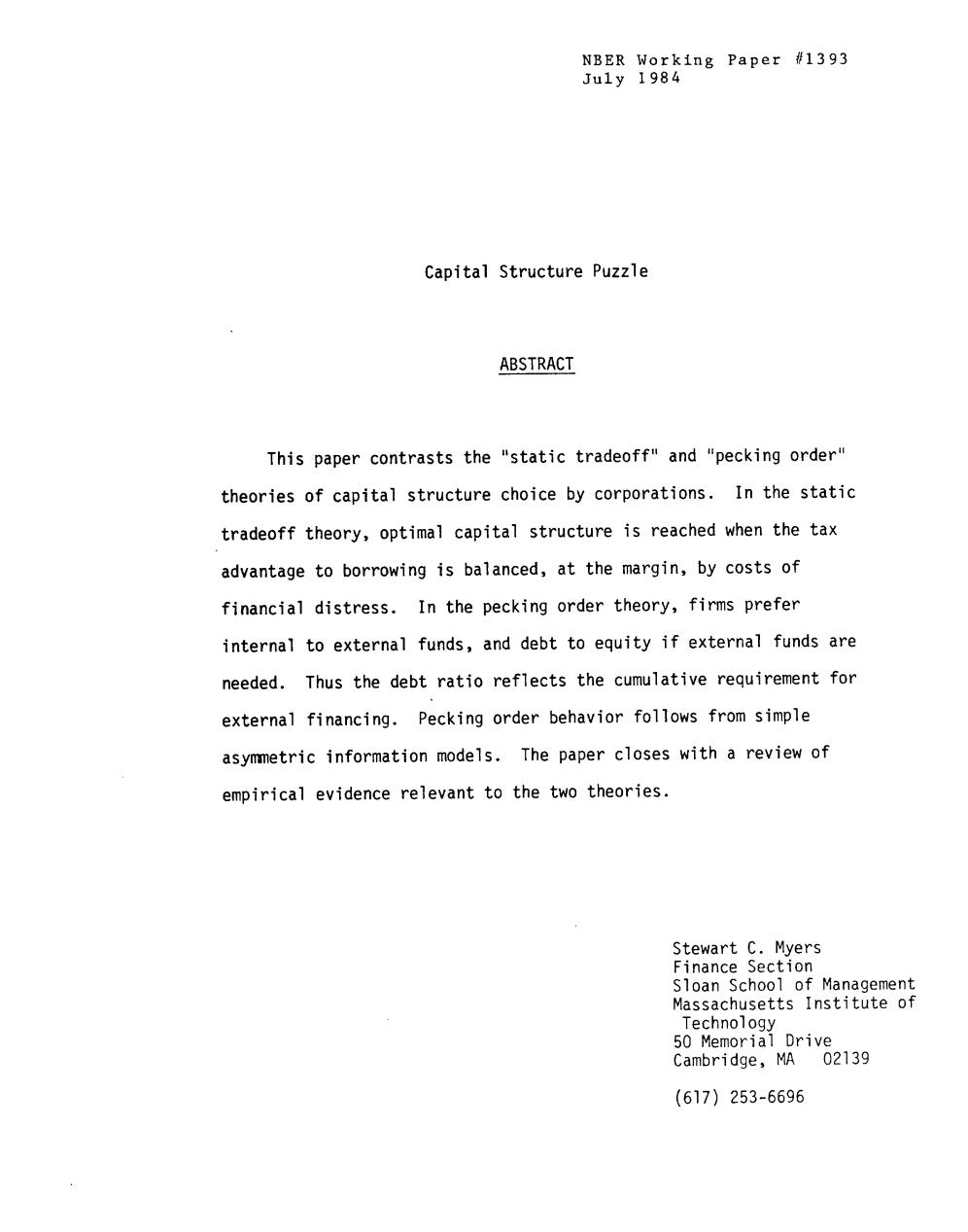
NBER Working Paper #1393 Ju1y1984 Capital Structure Puzzle ABSTRACT This paper contrasts the "static tradeoff"and "pecking order" theories of capital structure choice by corporations.In the static tradeoff theory,optimal capital structure is reached when the tax advantage to borrowing is balanced,at the margin,by costs of financial distress.In the pecking order theory,firms prefer internal to external funds,and debt to equity if external funds are needed.Thus the debt ratio reflects the cumulative requirement for external financing.Pecking order behavior follows from simple asymmetric information models.The paper closes with a review of empirical evidence relevant to the two theories. Stewart C.Myers Finance Section Sloan School of Management Massachusetts Institute of Technology 50 Memorial Drive Cambridge,MA 02139 (617)253-6696
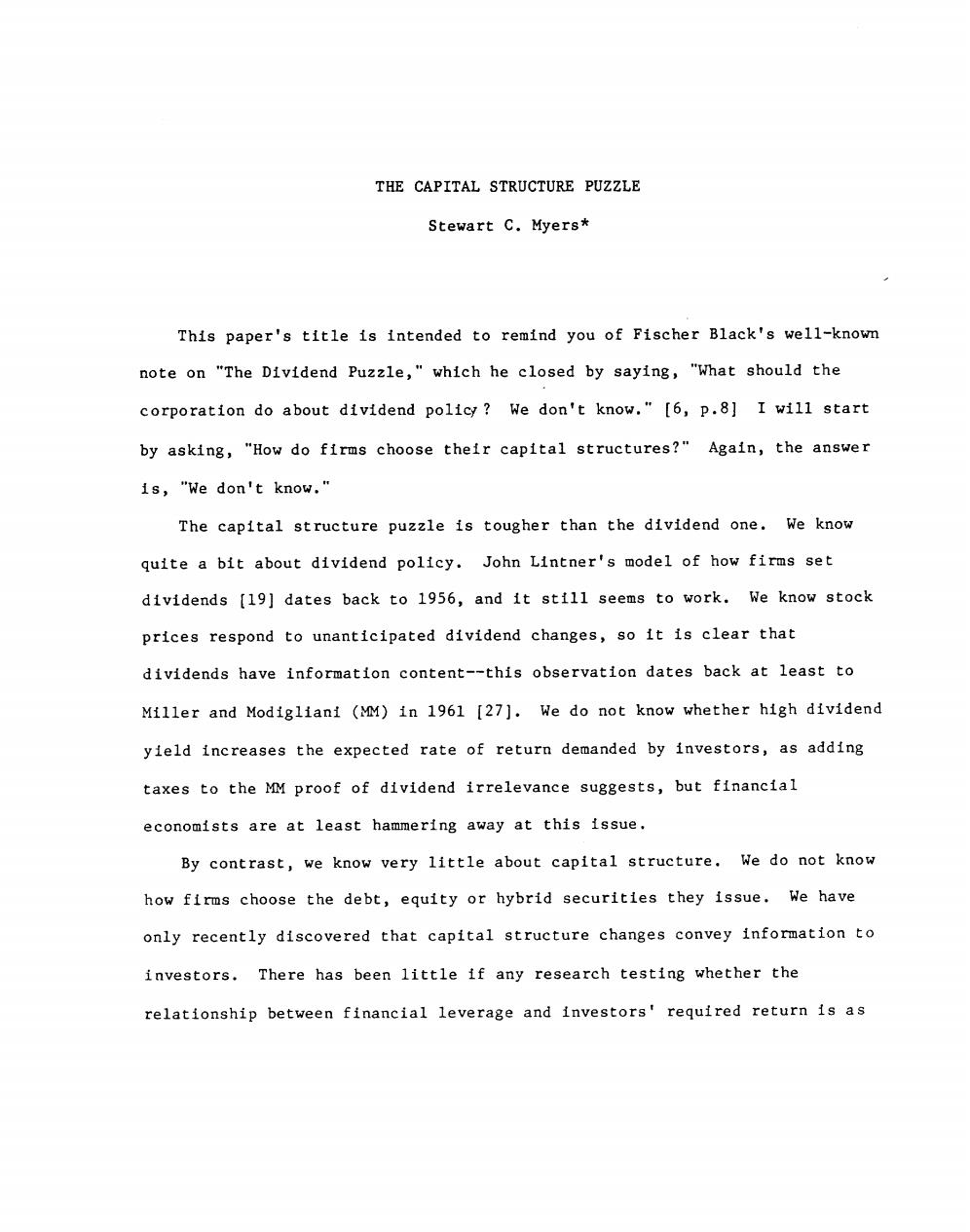
THE CAPITAL STRUCTURE PUZZLE Stewart C.Myers* This paper's title is intended to remind you of Fischer Black's well-known note on "The Dividend Puzzle,"which he closed by saying,"What should the corporation do about dividend policy We don't know."[6,p.8]I will start by asking,"How do firms choose their capital structures?"Again,the answer is,"We don't know." The capital structure puzzle is tougher than the dividend one.We know quite a bit about dividend policy.John Lintner's model of how firms set dividends [19]dates back to 1956,and it still seems to work.We know stock prices respond to unanticipated dividend changes,so it is clear that dividends have information content--this observation dates back at least to Miller and Modigliani (MM)in 1961 [27].We do not know whether high dividend yield increases the expected rate of return demanded by investors,as adding taxes to the MM proof of dividend irrelevance suggests,but financial economists are at least hammering away at this issue. By contrast,we know very little about capital structure.We do not know how firms choose the debt,equity or hybrid securities they issue.We have only recently discovered that capital structure changes convey information to investors.There has been little if any research testing whether the relationship between financial leverage and investors'required return is as
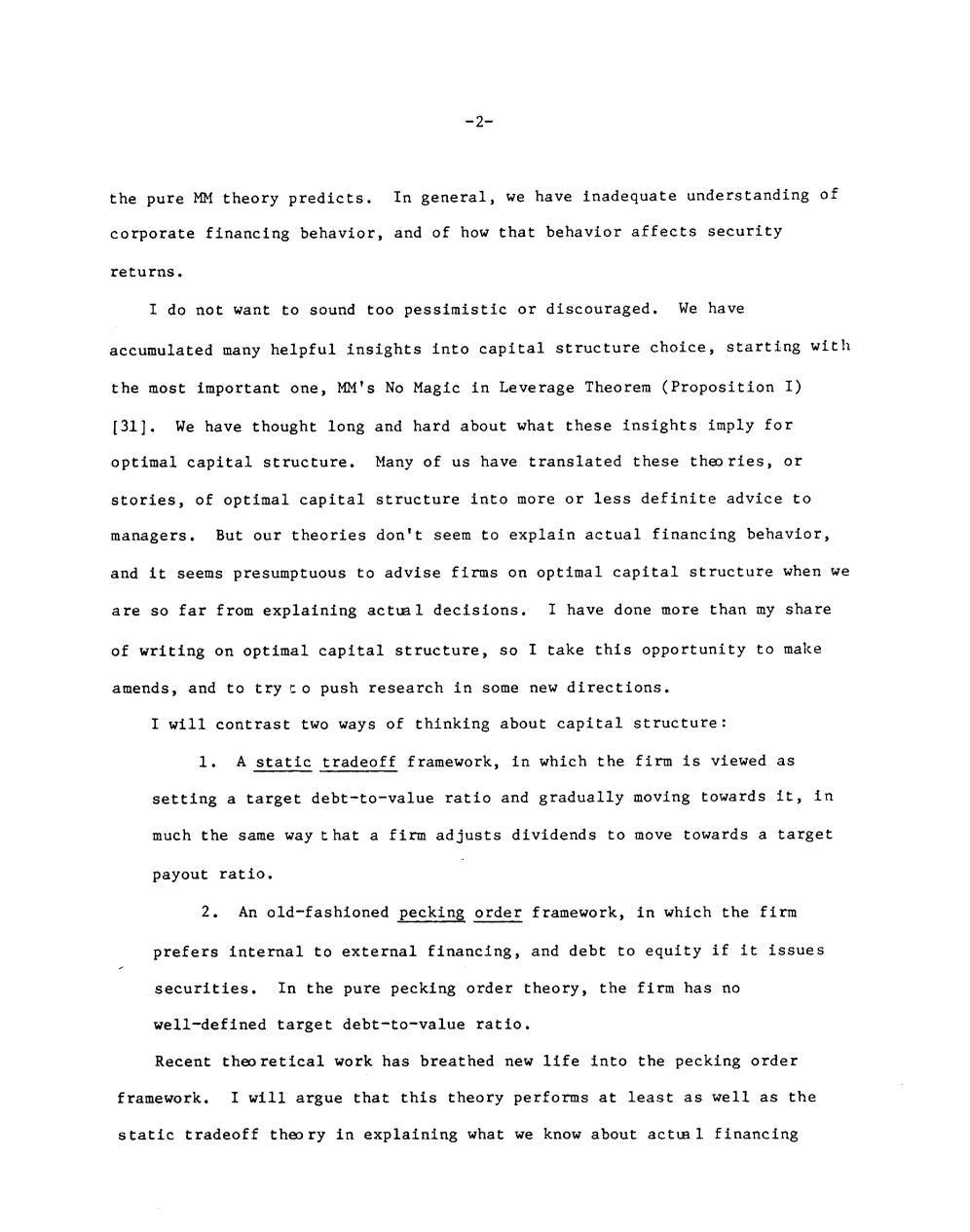
-2- the pure MM theory predicts.In general,we have inadequate understanding of corporate financing behavior,and of how that behavior affects security returns. I do not want to sound too pessimistic or discouraged.We have accumulated many helpful insights into capital structure choice,starting with the most important one,MM's No Magic in Leverage Theorem (Proposition I) [31].We have thought long and hard about what these insights imply for optimal capital structure.Many of us have translated these theo ries,or stories,of optimal capital structure into more or less definite advice to managers.But our theories don't seem to explain actual financing behavior, and it seems presumptuous to advise firms on optimal capital structure when we are so far from explaining actul decisions.I have done more than my share of writing on optimal capital structure,so I take this opportunity to make amends,and to try to push research in some new directions. I will contrast two ways of thinking about capital structure: 1.A static tradeoff framework,in which the firm is viewed as setting a target debt-to-value ratio and gradually moving towards it,in much the same way t hat a firm adjusts dividends to move towards a target payout ratio. 2.An old-fashioned pecking order framework,in which the firm prefers internal to external financing,and debt to equity if it issues securities.In the pure pecking order theory,the firm has no well-defined target debt-to-value ratio. Recent theo retical work has breathed new life into the pecking order framework.I will argue that this theory performs at least as well as the static tradeoff theo ry in explaining what we know about actu 1 financing
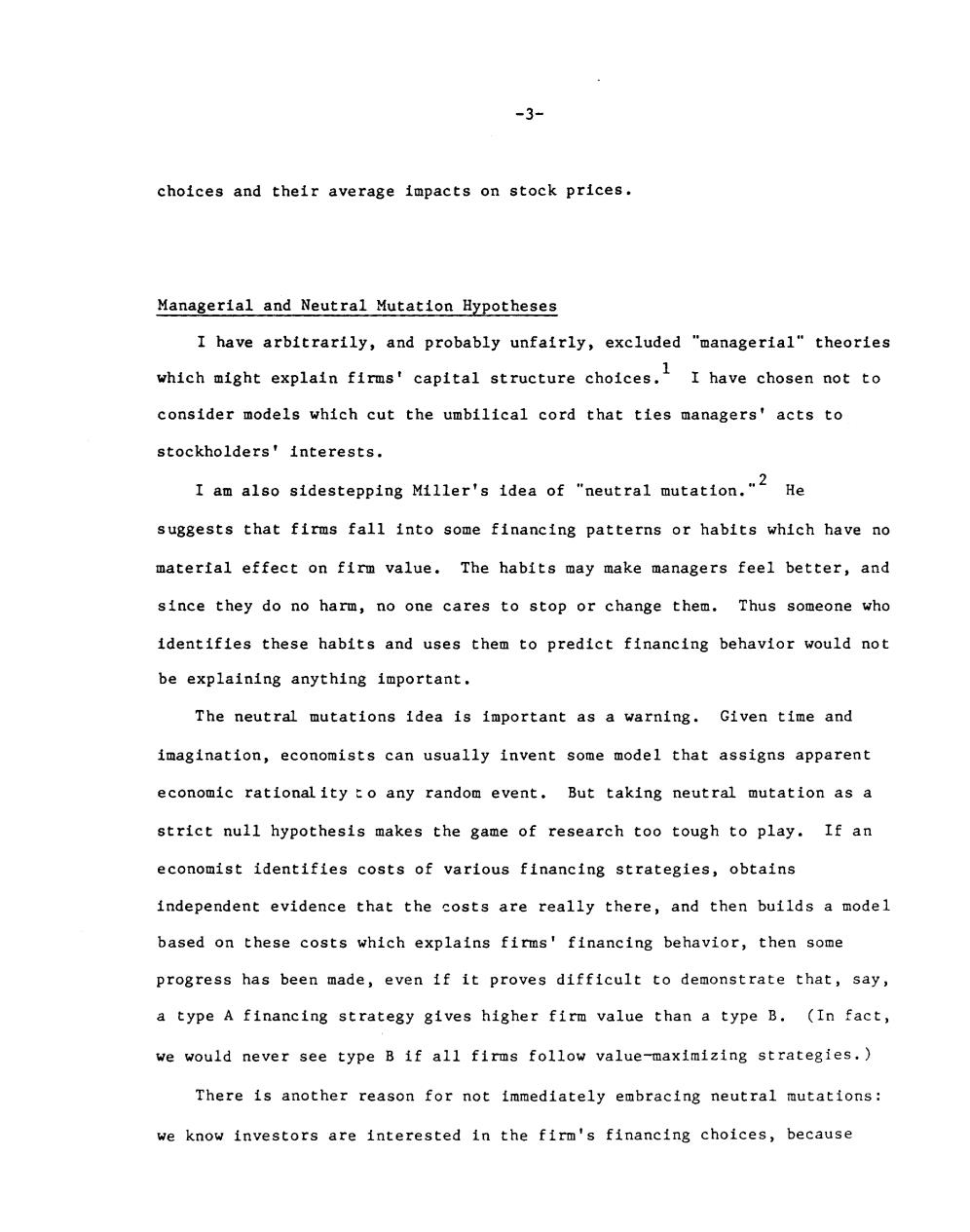
-3- choices and their average impacts on stock prices. Managerial and Neutral Mutation Hypotheses I have arbitrarily,and probably unfairly,excluded "managerial"theories which might explain firms'capital structure choices.I I have chosen not to consider models which cut the umbilical cord that ties managers'acts to stockholders'interests. I am also sidestepping Miller's idea of "neutral mutation."2 He suggests that firms fall into some financing patterns or habits which have no material effect on firm value.The habits may make managers feel better,and since they do no harm,no one cares to stop or change them.Thus someone who identifies these habits and uses them to predict financing behavior would not be explaining anything important. The neutral mutations idea is important as a warning.Given time and imagination,economists can usually invent some model that assigns apparent economic rationality to any random event.But taking neutral mutation as a strict null hypothesis makes the game of research too tough to play.If an economist identifies costs of various financing strategies,obtains independent evidence that the costs are really there,and then builds a model based on these costs which explains firms'financing behavior,then some progress has been made,even if it proves difficult to demonstrate that,say, a type A financing strategy gives higher firm value than a type B.(In fact, we would never see type B if all firms follow value-maximizing strategies.) There is another reason for not immediately embracing neutral mutations: we know investors are interested in the firm's financing choices,because